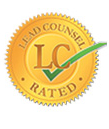Car accidents account for most personal injury cases in California. An accident can be a result of causes like defective tires. Typically, when you buy tires for your car, you expect them to be in good condition and to be safe. Unfortunately, this is not always the case. A defect in the tires can cause a car crash, resulting in significant injuries, even death. The state of California allows you to receive compensation for the losses you suffer as a result of an accident due to defective tires.
While pursuing your damages, you need to engage the services of an experienced attorney who understands compensation laws in California. At Los Angeles Car Accident Attorney, we are passionate about assisting our clients in receiving their compensation when involved in road accidents.
Understanding Compensation Laws in Car Accidents
The state of California is highly populated with bustling cities. As such, there is a prevalence of car accidents resulting in strict compensation laws. These laws were enacted to offer protection to drivers and motorists that may get injured due to other people’s fault. The law of compensation treats car accidents as either:
-
Pure comparative negligence or
-
At fault
California adheres to the system called at fault or tort system when seeking damages following an accident. This means that if you are injured following a car crash, you must show evidence that the other person was responsible for the injuries you sustain to get compensated by their insurance provider. When filing for a claim for the damages you suffered, the insurance company will contest the claim if there is no evidence that their client is responsible for the accident.
On the other hand, the fault in an accident can be shared. If you seek a claim that the other motorist was responsible for the accident, he or she may also claim you were responsible or partially responsible. If the fault is found to be shared, the judge calculates the percentage of responsibility and awards damages based on that. This is found under the comparative negligence laws.
When you are involved in a car crash as a result of defective tires, the law allows you to get compensated for two kinds of damages:
-
Economic damages and
-
Non-economic damages
The damages awarded depend on the extent of losses suffered and differ from one victim to the other. Later in this article, we shall discuss in detail what is comprised in each type of damage and how you can receive compensation for them.
Tire Defect Causing an Accident in California
When an accident occurs, it is not always the fault of the driver. Sometimes, the negligence from a car tire manufacturer can be the reason for an accident causing severe injuries. If this happens with your car, you can get compensated by the manufacturer of the faulty tire.
However, to win these damages or receive your claim, you must have an experienced lawyer on your side that will involve experts in determining the defect of the tires.
A car tire defect is also known as a blowout. A car accident because of a defective tire may be as a result of:
Tire Explosion
When you are driving and a tire bursts or explodes, you are likely to lose control of your vehicle and crash onto another car, a stationary object, or rollover. An explosion of a tire is one of the most prevalent accidents as a result of a defective tire. If you were moving at high speed and your tire explodes, hitting multiple cars is possible.
For you and the other motorists to get damages from the tire manufacturer, you must show they were careless or negligent. You must show that the manufacturer failed to produce tires that meet the required standards. If your lawyer can prove that the manufacturer failed in their duty of providing quality tires, they can be held accountable for all the damages suffered as a result of the accident.
You must also understand that getting damages in such a case is not straight forward. The tire manufacturer may refute your claim and try to show that you were careless and liable for the crash instead. In doing this, they may investigate you, the tire that exploded, and if you were working for a company, they would investigate it too.
If during the investigation, it is determined that you did everything right and tried to minimize the damages, then the manufacturer is held liable. You and any other motorist that suffered damages as a result of this type of crash will get your losses paid by the manufacturer.
Sidewall Tire Collapse
Sidewall collapse can be as a result of several things, including:
Underinflation – This can happen either due to driver negligence or damage to the tire. Typically, every tire will lose air. However, when the tire is damaged, it loses air more than a good one. When your tire has lost a lot of air, it cannot support the car’s load or the weight of its passengers. The heat buildup as a result and that of its already high temperatures will cause it to dissipate. During hotter months, sidewall collapse is more rampant and may result in dangerous car accidents.
The fault, in this case, must be established to seek damages from the correct party. If the driver were responsible for the tire being under-inflated, he or she would be held accountable for the accident. Other motorists that suffer damages, as a result, will turn to his or her insurance provider for compensation.
On the other hand, if the tire was faulty, resulting in the under inflation, the manufacturer of the tire is held accountable and must compensate the affected parties of their losses.
Uneven tire wear – This is another cause of a tire collapsing on the side. The manufacturer of a tire can also be the reason the tire does not wear out evenly. Although sometimes the driver may not realize the tire has been worn out hence risking an accident, the fault in its wearing down can also be the drivers. A manufacturer can use defective or inappropriate materials while manufacturing the tire. In this case, the tire may wear out faster than it should and unevenly. When this happens, the tire can collapse, and you lose control of the vehicle, resulting in an accident. Your lawyer must determine that the manufacturer made the faulty tire for you to earn compensation for damages.
Manufacturing defects – These also cause the sidewall collapse of tires. If a manufacturer fails to test their tires before putting them in the market adequately, they fail to see they have a low-speed rating. This causes them to overheat, resulting in blowouts or sidewall collapse. Other causes of blowouts in tires are when:
-
There was an imbalance of compounds, or there was moisture and other impurities during the manufacturing time. This will be seen when a tear is visible from the bead to the tread, looking like a sidewall and ends up causing a crash.
-
There is a break between the connection of the tread and belt ply. This causes the tire to have a bulge that may result in a tear and an explosion of the tire.
-
The tire defectively overheats, resulting in blisters on the tires which are dangerous to have on the road.
-
The tire is poorly designed or is made from inadequate rubber, causing the tire to de-bead and easily deflate.
A defective tire as a result of any of the above reasons can lead to a severe accident that leaves the victims with substantial damages. Your attorney must, however, determine whose fault it was for the tire to be in that condition that resulted in the accident.
Tread Separation
This condition is very dangerous, and it happens when the tread detaches from its body or casing. Sometimes, tires wear out unevenly or prematurely because of defective design or manufacturing. Ideally, a tire must have a stable and strong bond with its fabric cords and special rubber compounds, also with its metal wires. If the tire tread separates or wears out, the chances of blowouts increase, just like for accidents. You should regularly inspect your tires to detect any of these conditions.
The causes of tread separation are:
-
Excessive wear – When tires exceed the miles they are set to cover and are still using them, you are overworking them. The tread separation rate is increased as a result and the chances of a blowout as well.
-
Improper repair of a flat – If you had your tire repaired at some point either by using a patch or plug, an error during the process could result in the separation.
-
Manufacturing defects result in separation as well. If an error occurred during the mixing of chemicals to manufacture the tire, the bonding of the tread is affected, resulting in separation.
-
Careless driving can also cause tread separation. Even when you have excellent tires, and you drive carelessly by hitting potholes, you will cause your tire tread to separate.
When an accident results from the tire tread separating, the fault can be the drivers or the manufacturers, as discussed. Your attorney, with the help of experts, can determine the party responsible for the defective tire and seek compensation from them.
Failure of Tire Bread
The part of the tire called tire bread rests on the wheel. This part remains in place because of air pressure. If during the making of the bread, an error occurred or following the mounting procedure, the whole tire may fail to deliver as expected. When the tire has low pressure, bread failure can also occur. The tire must have sufficient pressure to keep the bread held in place, failure to which the tire will separate from the wheel.
If bread failure is determined to be the reason for the accident, the reason for the defect will determine the party liable. If the driver of the vehicle were responsible for the defect, you would sue them for damages. On the other hand, if you establish the problem was due to a manufacturer’s error, you will seek damages from the tire maker.
Seeking Damages
When an accident occurs, its cause must be determined in California. This is because California is a fault state, meaning damages are paid by the party responsible for the accident. Various parties can be held accountable for an accident due to a defective tire. These include:
-
The manufacturer of the defective tire
-
The shop that repaired your tire
-
The mechanic for the vehicle
-
The driver or vehicle owner
-
The seller of the tire
If it is determined that you bought the tire with defects from the manufacturer, the law does not require you to determine the responsible party. Based on the product liability law, the entity responsible for designing, manufacturing, or selling the defective tire is responsible for the damages and injuries resulting.
Under the strict liability law, you may not know what resulted in the defect. The design of the tire could have been flawed, or a manufacturing error occurred, causing the tire to be defective. When as an innocent buyer, you purchased the tire, you are protected under strict liability laws. With the help of your lawyer, you can seek damages without having to show negligence on the part of the manufacturer. However, strict liability law is only applicable where:
-
There is the presence of manufacturing defects
-
There are defects in the design of the tire
-
There was no warning for the particular defects
Aside from the tire manufacturer, as mentioned above, other parties can be held accountable for the damages resulting from a defective tire. If you are a victim of such an accident, under the negligence law of California, you can sue the party responsible for the tire being defective.
If the insurance provider for the liable party declines to compensate you, you can file a lawsuit seeking damages for their negligence. Unlike in strict liability laws, you must show the party’s negligence to get compensation under negligence law. There are three particular elements that you must determine in your lawsuit. These are:
-
You were owed a duty of care by the defendant
-
But the defendant violated the duty of care
-
Because of the breach, the tire malfunctioned, causing an accident that resulted in the damages you are seeking
Proving the Accident Was as a Result of a Defective Tire
When you have filed a claim on product liability, you are not required to prove that the seller or manufacturer was negligent. The manufacturer can still be held accountable even when no negligence was noted at the production of the malfunctioning tire. For you to receive damages based on product liability, you and your lawyer must show that:
-
The tire was designed, manufactured and sold or distributed while defective by the defendant
-
The tire was already defective even as it left the sellers or manufacturers possession
-
You used the tire as required in a reasonable manner and
-
Because of the defect in the tire, you sustained injuries.
To further support your claim, your lawyer will present an expert to testify to the defectiveness of the tire and how it would have caused the accident. Typically, your attorney will engage a tire expert and give them the accident information together with any remaining tire parts for analysis.
While basing your case on strict liability, your attorney will focus on any of the following areas:
Defects in Manufacturing of the Tire
A defect during the making of a product causes the final product to be different from:
-
The specifications or design by the manufacturer
-
Other standard products from the line
When showing a defect in a tire case, your lawyer can show a comparison between the defective piece and others from the product line. He or she can also show how the tire is different from the specifications of the manufacturer. This difference is the indication of a defect. In proving liability in defective manufacturing, your lawyer must determine the elements of the claim, as earlier discussed.
Defect in the Tire’s Design
A defect in the tire could also be out of its design. Some of the defects are:
-
The failure of the tire to perform ordinarily and safely as would be expected by you when it was used in a reasonable manner
-
The advantages of the design fail to outweigh the dangers in it
When seeking damages under this, you must show the prior elements to be true, including proving that the tire failed to perform safely and according to how, as an ordinary consumer expected. You must also demonstrate that you used the tire reasonably and as it should.
Warning Defects
If the maker, seller, or distributor of a tire failed to give sufficient warning or instructions on safety, under strict liability laws, this could be considered a defect. When seeking damages under this premise, you must show the other elements as discussed earlier, including:
-
That the manufacturer knew about the potential risks of the tire or should have known
-
These risks presented potential danger when the tire was used as expected and reasonably
-
As a regular consumer, you were not able to recognize these possible risks
-
And the manufacturer failed in their duty to warn customers of possible risks
-
And as a result of this failure, you got injured.
Defenses the Tire Company may Present
When you sue the tire manufacturer, seller, or distributor, they are entitled to defend themselves against your claims. This is ordinarily to avoid being liable for the damages as a result of the defective tire or shifting the blame to another party. Some of the defenses they may present in court include:
-
They were not responsible for the manufacture, distribution or selling of the defective tires
-
The tire in question met the required quality standards and is not defective
-
The consumer misused the tire or failed to use it in a reasonable way
-
That you were not injured from the accident
-
That the tire was later modified after being sold to you
-
You were responsible for the accident and not the tire
After both you and the defendant present your case in court, it may be concluded the manufacturer bears full responsibility for the accident, or you or both of you share liability. Fortunately, in the state of California under the comparative fault laws, you will recover damages depending on your degree of fault.
For instance, if the court establishes the tire manufacturer was 75% at fault, you will get compensated 75% of your damages, and you take responsibility for the remaining 25%.
Recoverable Damages when a Defective Tire is Responsible for Injuries
If you were injured in a car accident as a result of a defective tire, you are entitled to receive both economic and non-economic damages. These damages are referred to as compensatory damages intended to put you back to the position you were before the accident.
Economic damages have a monetary value meaning they are supported by documents showing the actual costs. On the other hand, non-economic damages are harder to determine. The jury in determining how much to award in non-economic damages looks at the magnitude of the injuries sustained.
When suing for compensatory damages, you will be entitled to the following compensations:
-
Cost of treatment – This includes all your hospital bills following the accident, cost of medication, medical supplies, medical procedures, medicine, and doctor’s fees. All these costs must be well documented and attached to your claim.
-
Future medical care – Depending on the severity of the injuries, some of them may require prolonged treatment. If this is the case, your doctor must give a comprehensive report indicating the possible treatments you will require and their cost.
-
Lost income – As you recover from your injuries, you will miss work and your pay for those days. Additionally, if your injuries were substantial enough to deny you the ability to work, the future earnings you lose as a result are compensable.
-
Pain and suffering – Although this cost is not supported by any document, the court looks at the injuries suffered and awards you the cost of your suffering and pain as a result of the accident.
-
Burial costs – If you died or a loved one died as a result of this accident; your family will receive compensation for the cost of the funeral and burying you.
Find a Los Angeles Car Accident Lawyer Near Me
When you have done everything to be safe on the road but still get an accident due to the fault of another party, it is devastating. A defective tire accident can result in significant damages, both financial and non-financial. The party responsible for the accident, according to California laws, must compensate you for your losses. Having an experienced attorney represent you is an added advantage towards recovering your losses. At Los Angeles Car Accident Attorney, we are passionate about helping our clients seek these damages. Call us at 424-237-3600 to discuss your claim further.






